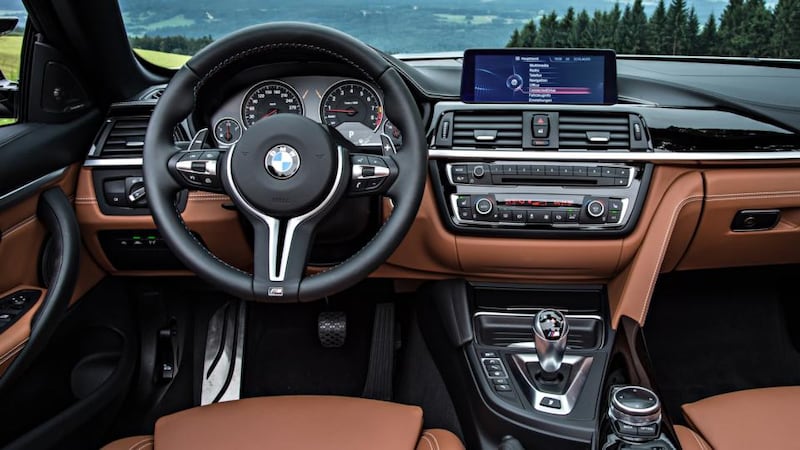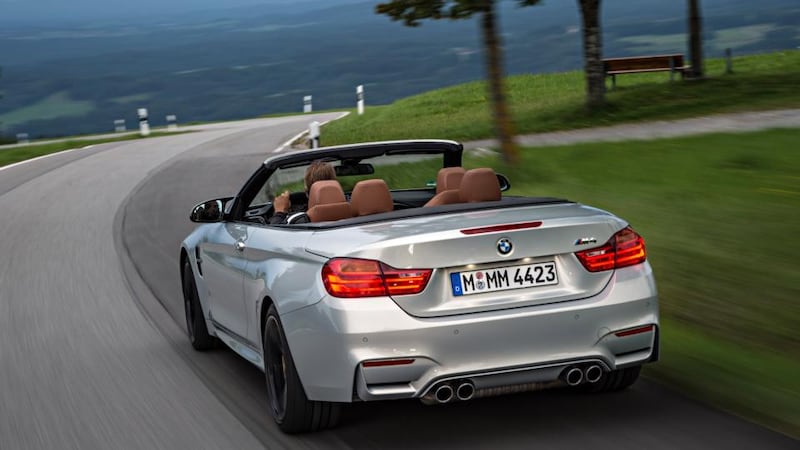The telling moment came during a trawl through the press chaff accompanying BMW’s launch of the new M4 convertible. These tomes are often dreary tracts of facts, figures and no little hyperbole, useful only for checking up the official 0-100kmh times and C02 emissions. Some extend to page counts comparable to the output of 19th century Russian novelists to convince the weary hack that this new car is truly an automotive object of wonder. Some extend no further than a paragraph or two and the price tag.
In the M4’s info pack though, there is that rare thing; an admission. In the notes on the historical provenance of Munich’s new open-top guided M-missile, there is a reference to the creation of the first-generation M3 convertible in the 1980s. Now, the standard 3 Series convertible of that era was a nice enough little car, pretty and pleasant but it had the structural rigidity of wet lettuce. One contemporary magazine road test remarked that, when the car was parked on the brow of a steep hill, the body flexed so much that it was impossible to securely latch the soft-top roof to the header rail.
The admission comes when the brochure explains that to create the original soft-top M3, "after around two years of resistance, BMW eventually gave in to significant customer demand, and the BMW M3 Convertible was unveiled." Resistance is right. BMW's M-division was then yet young, but already wise enough to know that lopping the top off of the sharp, delicate, precise original M3 was a route to handling disaster, no matter what the marketing men said.


Sadly, in the interim, the “M” in BMW M has come to stand much more for marketing than motorsport. Cars such as the elephantine X5M and X6M, not to mention the utterly bloated, two-tonne M6 cabriolet, have detracted greatly from M’s once unassailable reputation for motoring purity. Once, M-cars were the purest of the breed. Now, they have become bloated, soft and too keen by half to court the sales of those who don’t fully understand the lustre of the brand.
Marketing creep
The new M3 (and its cousin, the M4, whose name is another example of pointless marketing creep within the modern car world; what was wrong with M3 coupe?) did at least seem to change all that. Following hard on the heels of the fabulously frolicsome 1M Coupe of a couple of years ago, the new M3 and M4 arrived on a barrage of straight-six turbocharged noise and near-perfectly balanced rear-drive poise. To attack a racetrack or a sinuous stretch of road in the new M3 is a truly invigorating experience. Yes, like almost all modern performance cars, it's overloaded and overweight with needless luxury fripperies but it makes up for that with brilliant steering and occasionally feral handling – press a new M3 too hard and it will bite back, corporate social responsibility be damned.
The M4 though, oddly given that the two-door, lower-slung car should surely be the more overtly sporting of the two, feels a little softer and less aggressive than the saloon. To be honest, it’s trait you’d only notice after several back-to-back laps of a fast racetrack swapping between the two cars to divine the difference, but it is there. Both cars are fast, but the M3 just seems that bit more enjoyably hard-edged, and given the choice (and the winning Lotto numbers) it’s the saloon that would be my pick.
What would not be my choice would be to take the M4 and lop off the roof. Look, convertibles are all well and good and I enjoy the feeling of the sun on my bald patch as much as the next hopeless mid-life-crisis sufferer, but a convertible is never a proper performance car. Convertibles work best when they are made as low-ish-power fun cars, cars that are designed specifically to be enjoyable at slower speeds. A Mazda MX-5, Lotus Elise or, at a push, a basic spec Porsche Boxster are the best of the convertible bunch for precisely that reason; you don't have to accelerate to warp speed to enjoy them. That means that the airflow around your head and body doesn't wind up to hurricane force, making you put the roof up in search of comfort and thereby despoiling the whole point of having a convertible.
Keep a lid on it
The M4 is not like that. It is big, heavy and beefy and needs the full output of its 431hp turbocharged 3.0-litre straight-six engine to generate the kind of velocities that we now associate with an M-car. No matter that these very velocities render around 90 per cent of the M4's performance envelope unusable 90 per cent of the time – it's what's expected.
The trouble is that taking the roof off a car takes away its structural rigidity. BMW has combated this loss of stiffness by adding extra bracing, but the upshot of this is added weight – an even greater enemy of driving performance than a floppy body.
So while the M4 convertible retains the M4 coupe and M3 saloon’s meaty steering, blistering performance and symphonic soundtrack, it can never, quite, replicate their driving enjoyment. The heavy roof moves the centre of gravity around too much, the lost boot space renders it impractical, and the typhoon of wind ears makes you yearn for the solid roof of the coupe.
Yes, it’s beautifully engineered, yes it’s fast, yes it can make the spine tingle with both the anticipation and execution of its performance potential. But the coupe and saloon versions are sharper, harder, cheaper and more efficient. A 428i or 435i convertible is a brisk, enjoyable open-top machine. An M4 convertible is a performance thoroughbred, hobbled by fuzzy-headed marketing. It is both pointless and needless.
BMW M4 Convertible: The lowdown
Power: 431hp
Torque: 550Nm
0-100kmh: 4.4sec
Top speed: 250kmh (limited)
Claimed economy: 8.7l/100km (32mpg)
Emissions: 203g/km Motor tax: €1,250
Price: TBA
Our verdict: A pointless convertible conversion of a terrific performance car












